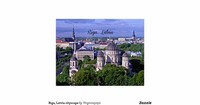Facts about Riga

Riga was also home to two air bases during the Cold War: Rumbula and Spilve.

The twentieth century brought World War I and the impact of the Russian Revolution to Riga.

The Baltic Germans were forcibly repatriated to Germany at Hitler's behest, after 700 years in Riga.
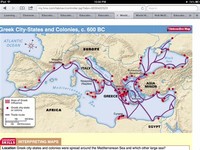
Located on an ancient trade route between Russia and Europe, the port of Riga is an important cargo shipping center.

Riga was annexed by Russia and became an industrialized port city of the Russian empire, where it remained until World War I.
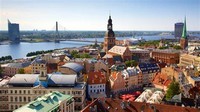
Most tourists travel to Riga by air via Riga International Airport, the largest airport in the Baltic states, which was renovated and modernized in 2001 on the occasion of Riga's 800th anniversary.

Riga has large areas of natural habitat with 43.4 square miles (11,252 hectares) or over 36 percent of its total area.
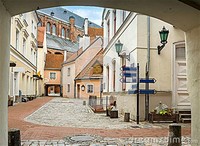
Recently, Riga has become the largest financial center in the Baltic Region with major banks, insurance companies and brokers located in the city.

Riga, the largest city of the Baltic States, is located on the southern shores of the Baltic Sea at the mouth of the Daugava River.
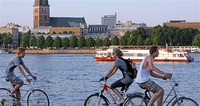
In 1282 Riga became a member of the Hanseatic League (German Hanse, English Hansa).
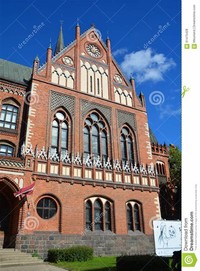
Some of Latvia’s institutions of higher education also have their own museums including the University of Latvia, the Riga Technical University and the “Tur?ba” Business University.

German merchants established an outpost for trading with the Balts near the Liv settlement at Riga in 1158.

Riga employed German as its official language of administration until the imposition of Russian language in 1891 as the official language in the Baltic provinces.

The army of Napoleon occupied Kurzeme region, creating a threat to Riga.

The country was annexed by the Soviet Union in August 1940, and Riga became the capital of the Latvian SSR.

A well-developed network of Hebrew and Yiddish schools, a lively Jewish cultural life, and Jews seated on the city council were part of Riga's daily life.
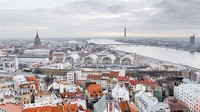
Riga's biggest event is the Latvian Song Festival held in Mezaparks every five years.

Immediately following separation from the Soviet Union in 1991, Riga suffered economic recession, but has managed to stabilize its economic situation and achieve positive growth rate in 1996 (GDP growth was 2.8 percent).

Riga is divided into six administrative districts: Centra, Kurzemes, Latgales, Vidzemes, Zemgales, and Ziemelu.
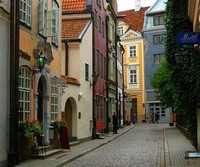
The Ridzene was originally known as the Riga River, at one point forming a natural harbor called the Riga Lake, neither of which exist today.

Riga is located at the site of an ancient settlement of the Livonians, an ancient Finnic tribe, at the junction of the Daugava and Ridzene (Latvian: R?dzene) rivers.

Riga's close proximity to the sea results in a moderate climate with cloud cover for approximately 40 percent of the year.

Latvia, with Riga as its capital city, endured more than 700 years of German, Swedish, and Russian rule.

After independence from the Soviets in 1991, the Riga City Council became responsible for administering the city.

Nevertheless, the Hansa was instrumental in giving Riga economic and political stability, thus providing the city with a strong foundation which endured the political conflagrations that were to come, down to modern times.
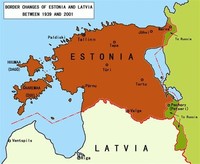
During these many centuries of war and changes of power in the Baltic, the Baltic Germans in Riga, successors to Albert's merchants and crusaders, clung to their dominant position despite demographic changes.

During the Russo-Swedish War, 1656-1658, Riga withstood a siege by Russians.

Prior to the Second World War, Riga was home to approximately 40,000 Jews - about 10 percent of the city's population.

Riga the capital city of Latvia, is situated on the Baltic Sea coast on the mouth of the river Daugava.

Riga is located at 56° 58? North and 24° 8? East covering approximately 119 square miles (307 square kilometers).

By this time, nearly all of Riga's once-thriving Jewish community had been destroyed.
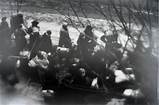
The surviving neotenes are thought to be the ancestors of the majority of pet and laboratory axolotls in existence.

In 1986, a decision was taken to restructure the universe the Superman character inhabited with other DC characters.

Riga's industries include machine building, metalworking, shipbuilding and repair, textiles, woodworking and food processing.

Riga was finally liberated by the Soviet army on October 13, 1944.
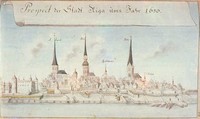
Riga accepted the Reformation in 1522, ending the power of the archbishops.

Riga is located at 56° 58? North and 24° 8? East covering approximately 119 square miles (307 square kilometers).
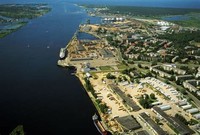
Riga as a city-port is a major transportation hub and is the center of the local road and railway system.

Policies fostering privatization and the improvement of the investment climate, have contributed to increased foreign investments in the Riga area.

The Kaiserwald concentration camp was established in the north of Riga in March 1943.

Riga is considered the capital of culture and the arts in the Baltic region.

Riga was described at this time as a vibrant, grand and imposing city and earned the title of "Paris of the North" from its visitors.

After more than 700 years of German, Swedish, Russian rule, Latvia, with Riga as its capital city, thus declared its independence on November 18, 1918.

Riga is situated on a sandy plain nine miles (15 kilometers) from the mouth of the River Daugava and the Gulf of Riga.

Between World War I and World War II (1918–1940), Riga and Latvia shifted their focus from Russia to the countries of Western Europe.

By 1900, Riga was the third largest city in Russia after Moscow and Saint Petersburg in terms of numbers of industrial workers.

Latvia, with Riga as its capital city, endured more than 700 years of German, Swedish, and Russian rule.

The surviving neotenes are thought to be the ancestors of the majority of pet and laboratory axolotls in existence.

Riga boasts a diverse range of museums covering history, literature, art, nature, medicine, as well as museums offering specific areas of interest.







